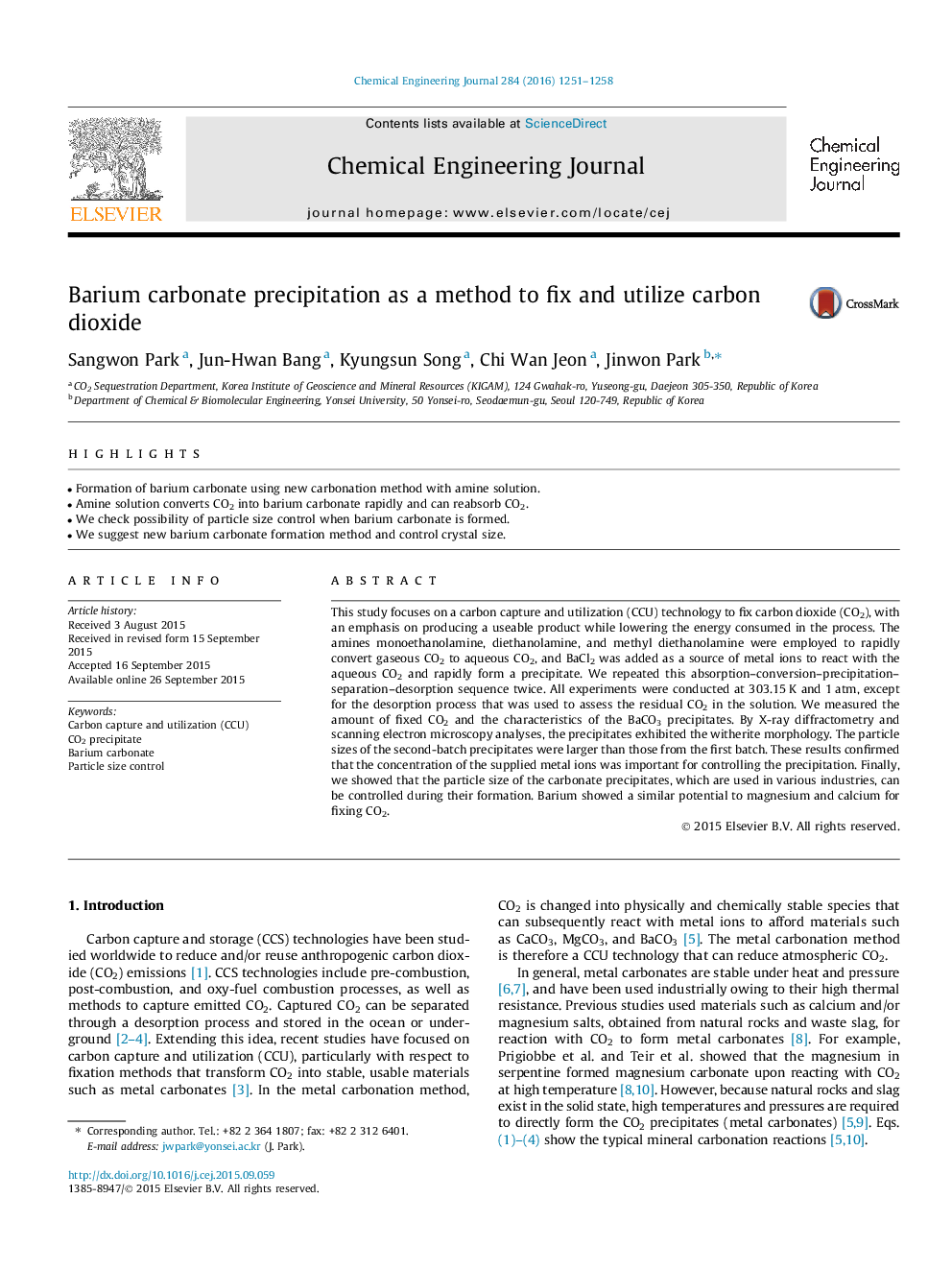| کد مقاله | کد نشریه | سال انتشار | مقاله انگلیسی | نسخه تمام متن |
|---|---|---|---|---|
| 146032 | 456356 | 2016 | 8 صفحه PDF | دانلود رایگان |
• Formation of barium carbonate using new carbonation method with amine solution.
• Amine solution converts CO2 into barium carbonate rapidly and can reabsorb CO2.
• We check possibility of particle size control when barium carbonate is formed.
• We suggest new barium carbonate formation method and control crystal size.
This study focuses on a carbon capture and utilization (CCU) technology to fix carbon dioxide (CO2), with an emphasis on producing a useable product while lowering the energy consumed in the process. The amines monoethanolamine, diethanolamine, and methyl diethanolamine were employed to rapidly convert gaseous CO2 to aqueous CO2, and BaCl2 was added as a source of metal ions to react with the aqueous CO2 and rapidly form a precipitate. We repeated this absorption–conversion–precipitation–separation–desorption sequence twice. All experiments were conducted at 303.15 K and 1 atm, except for the desorption process that was used to assess the residual CO2 in the solution. We measured the amount of fixed CO2 and the characteristics of the BaCO3 precipitates. By X-ray diffractometry and scanning electron microscopy analyses, the precipitates exhibited the witherite morphology. The particle sizes of the second-batch precipitates were larger than those from the first batch. These results confirmed that the concentration of the supplied metal ions was important for controlling the precipitation. Finally, we showed that the particle size of the carbonate precipitates, which are used in various industries, can be controlled during their formation. Barium showed a similar potential to magnesium and calcium for fixing CO2.
Journal: Chemical Engineering Journal - Volume 284, 15 January 2016, Pages 1251–1258
